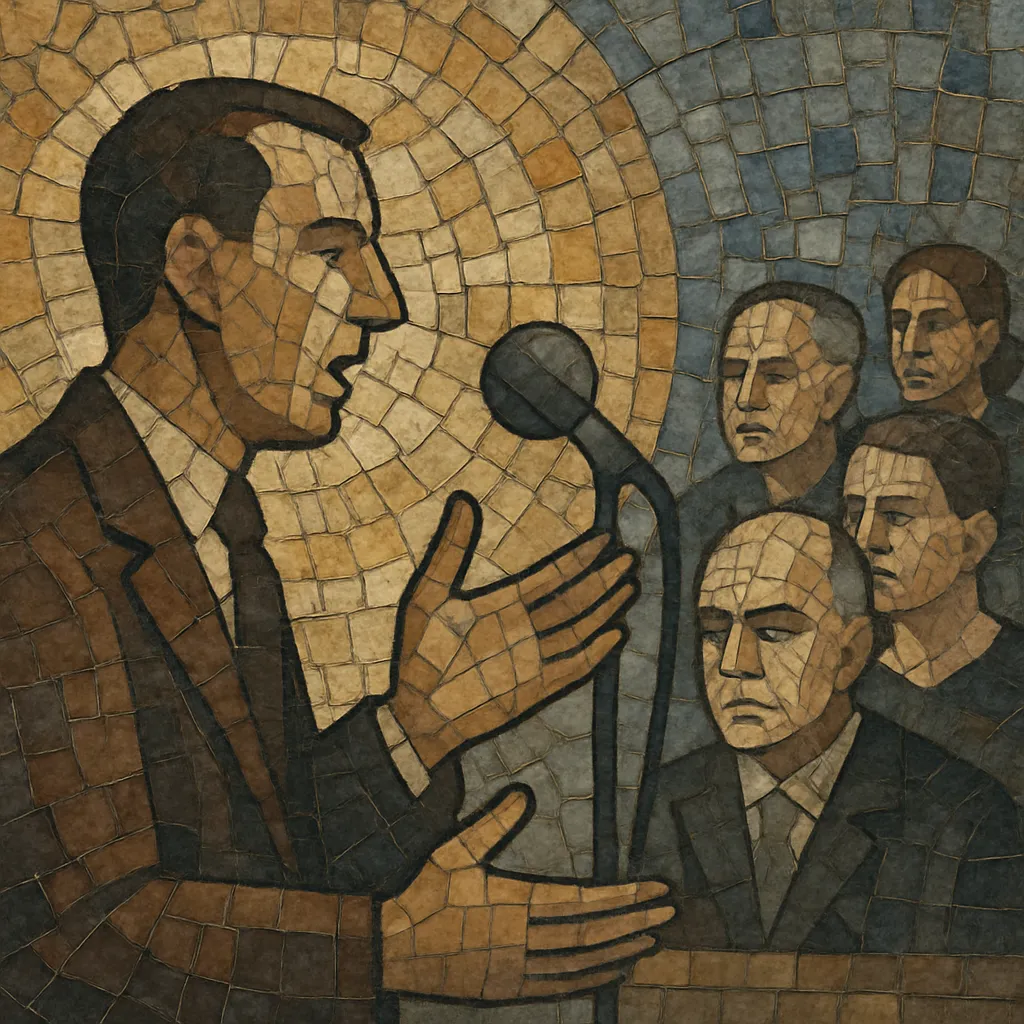Speech is a non-music recording category focused on intelligible spoken language rather than melody, harmony, or meter. It encompasses political addresses, public announcements, news bulletins, commemorations, and other forms of formal oratory captured as audio.
Unlike spoken word poetry or stand-up comedy, the emphasis in speech recordings is on clear rhetoric, message delivery, and documentary value. The production prioritizes intelligibility, natural prosody, and sonic transparency, often avoiding musical accompaniment so that content remains archival, reference-grade, and contextually faithful.
From wax cylinders and shellac discs to radio tape, cassettes, digital broadcast, and streaming archives, speech has been a core use-case of audio media, preserving moments of civic life, cultural change, and history in their original voices.
With the advent of the phonograph and commercial cylinders, engineers captured recitations and addresses, proving that the new medium could preserve not only music but the human voice itself. Early speech records included demonstrations, announcements, and short public orations.
The rise of radio transformed speech into a daily fixture. Fireside chats and wartime addresses demonstrated how live and recorded speech could inform, rally, and comfort populations. Record labels and broadcasters archived key addresses on discs and tape for later rebroadcast and sale.
As television expanded, speeches gained an audiovisual dimension, but audio issues continued to be pressed and circulated on LPs and cassettes: commencements, conventions, memorials, and public forums. Historic civil rights addresses became definitive speech recordings studied and replayed worldwide.
Affordable tape duplication, then CDs, enabled wide distribution of lectures and commemorations. With the web, broadcasters and public institutions began large-scale digitization, placing archival speech catalogs online for study and public access.
Official channels, public broadcasters, and libraries now release live and historical speeches with improved metadata, transcripts, and accessibility. While podcasts and spoken word overlap culturally, archival and documentary speech remains a distinct category centered on formal oratory and historical record-keeping.
Start with a clear thesis and audience. Outline a beginning (attention and context), a middle (arguments and evidence), and an end (resolution and call to action). Use rhetorical devices such as repetition (anaphora), contrast, triads, and vivid imagery to aid memory and impact.
Target 120–160 words per minute for comprehension. Vary prosody: adjust pitch, pacing, and pauses to shape meaning and emphasis. Practice breath control and articulation (especially plosives and sibilants). Maintain eye contact in live settings while keeping a consistent mic position.
Record in a quiet, treated room. Use a large‑diaphragm condenser or a quality dynamic speech mic with a pop filter, 48 kHz/24‑bit. Place the mic 15–25 cm from the mouth, slightly off‑axis to reduce plosives. Capture 10–20 seconds of room tone for seamless edits and noise profiling.
Edit for content first: tighten pauses, remove stumbles, and preserve natural cadence. Apply gentle high‑pass filtering (e.g., 70–90 Hz), light compression (2:1–3:1) for evenness, and subtle de‑essing. Use broadband noise reduction sparingly to avoid artifacts. Aim for broadcast‑style loudness (around −16 to −14 LUFS integrated) with intersample‑safe limiting.
Avoid intrusive music beds unless contextually appropriate; if used, keep them low and non‑distracting. Provide accurate titles, dates, locations, and speaker names. Include transcripts and captions for accessibility and searchability.


